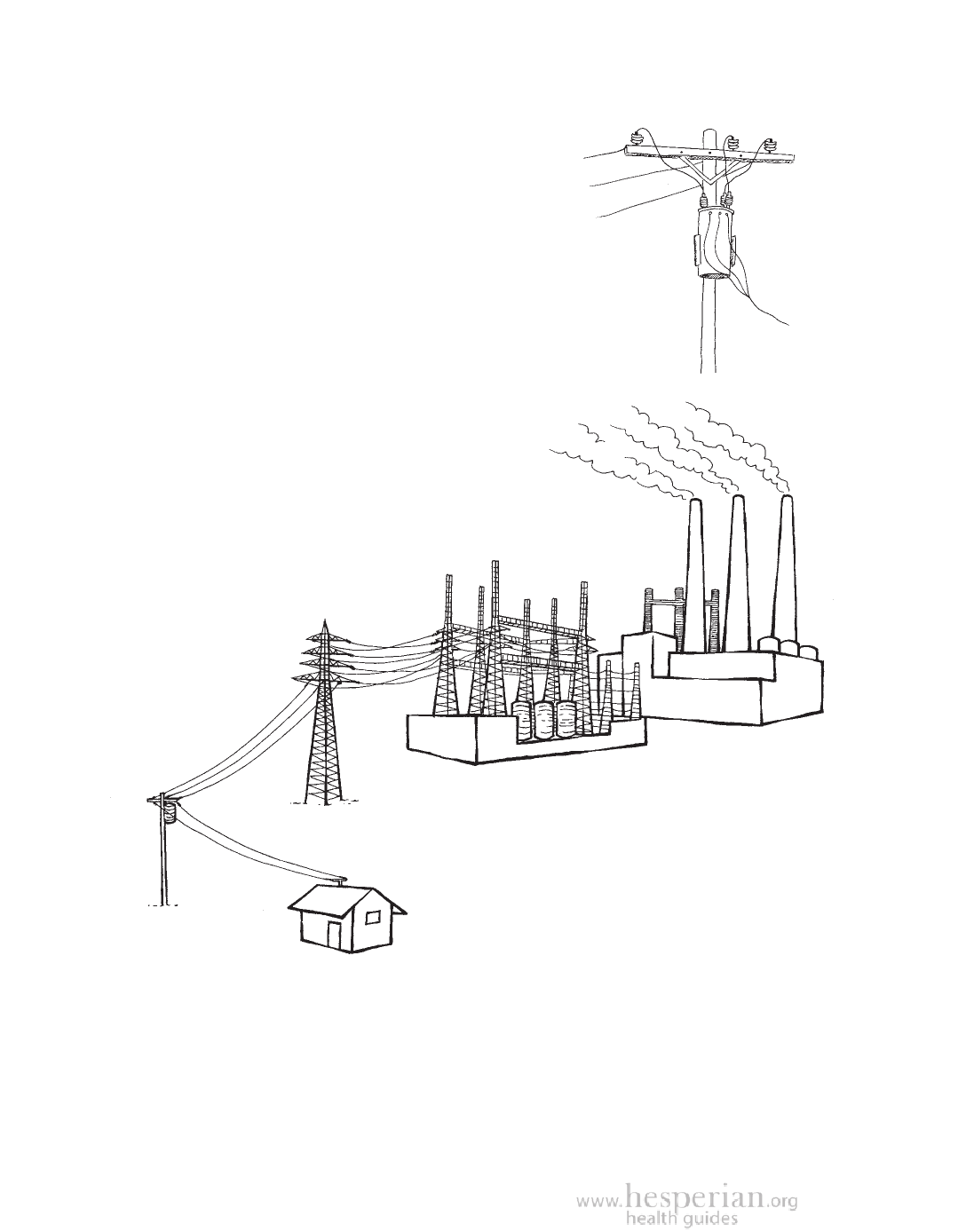
530 Clean Energy
Energy Distribution
Large power plants run by private industry and
governments generate electricity and distribute it
through high-voltage wires to different areas.
Then the electricity passes through transformers (machines
that change the electricity from high voltage to a lower
voltage that can be used in homes and businesses). Low
voltage wires bring the electricity into houses or factories
to run lights and machines.
The problem with the way most electricity is produced
today is not only that it is dirty, but that it
is produced on a very large scale and sent
over long distances. This is very expensive.
Because this distribution system is so
expensive, smaller communities may wait
years for the national electric system to
arrive, if it ever arrives at all.
So most electricity goes to the
biggest users: industry
and cities.
Transformer
It is very costly to transport
electricity through high-voltage
wires over long distances.
Clean energy from wind, sun, and water can be made in smaller quantities
at a lower cost, so clean energy is easier to use close to where it is produced.
Communities that use clean energy can have control over their own energy
resources. When electricity is made locally from sunlight, water, or biogas, it
reduces dependence on fossil fuels, and on expensive, high-voltage distribution
systems. It also avoids having faraway government agencies or large
corporations setting prices and controlling where the energy can go.
A Community Guide to Environmental Health 2012